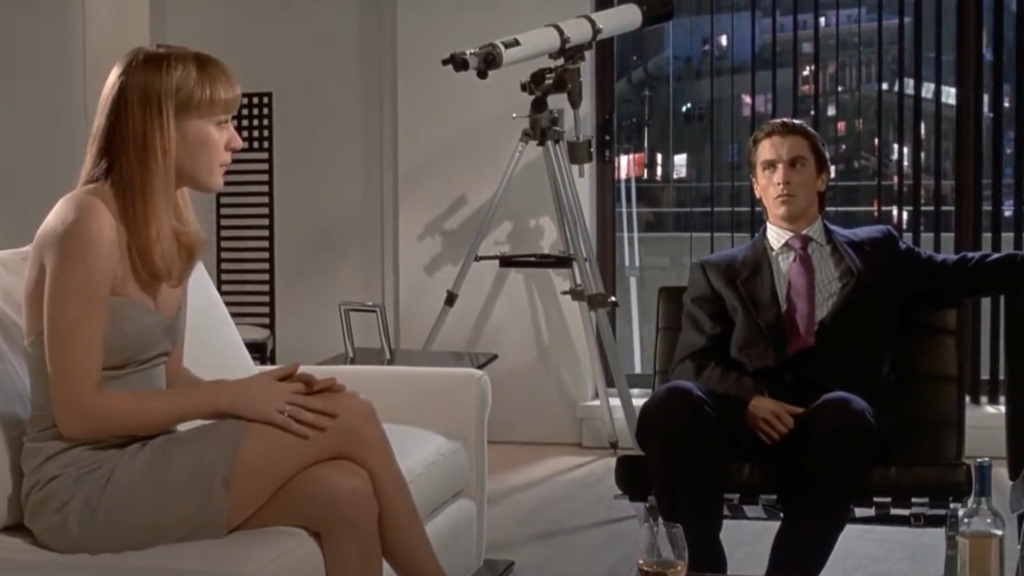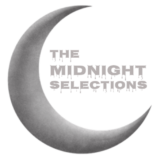American Psycho
2000

Rated: R
Genre: Horror, Dark Comedy
Country: U.S.
Run-Time: 1h 41min
Director: Mary Harron
Cast
Christian Bale………Patrick Bateman
Willem Dafoe……….Detective Donald Kimball
Chloë Sevigny………Jean
Jared Leto………………Paul Allen
When American Psycho was released, it ruffled feathers because it was based on Bret Easton Ellis’s excessive, graphic and often-banned 1991 novel. Truth be told, this film was always going to face obstacles if it was going to see the light of day, which is partly the reason why it has a pre-production history that is as interesting as the film itself.
Here’s the short version.
The story goes, producer Edward R. Pressman bought the film rights for American Psycho in 1992 and soon after got David Cronenberg interested in directing and Brad Pitt agreeing to be the lead. But after two script writers, one of which was Ellis himself, could not produce a script that satisfied the director’s particular demands- which included an unusually short page count and no restaurant or club scenes- Cronenberg moved on. But to be fair, Ellis admits that he had gotten bored of his story when he was trying to adapt it, so the version of the script he handed Cronenberg tried to spice things up by ending with a musical number.
Next, Mary Harron, an emerging talent who had made noise with her debut film I Shot Andy Warhol, tried her hand in co-adapting a script with the hopes to direct. During that time, she met an up-and-coming, but little-known, actor named Christian Bale and thought he’d be perfect for the main role. However, none of the major studios were interested in funding such a controversial project, until Mary turned to Canadian based Lionsgate Studio. But Lionsgate wanted a bigger star than Bale to play the lead, so the studio approached Leonardo DiCaprio. Harron, thinking DiCaprio looked too boyish to do justice to the role, vocally objected and was fired from the project. Lionsgate then got Oliver Stone, who was on DiCaprio’s shortlist of directors, on board to film, but Stone reportedly wanted to eliminate most of the satirical portions of Harron’s script. There is also a rumour that DiCaprio was convinced by feminist journalist Gloria Steinem to drop the film since the misogynistic script could tarnish his post-Titanic image as a heartthrob. DiCaprio left the project citing creative differences with Stone, and Harron was hired back. Ewan McGregor was then brought in, but later stepped down as a favour to Bale. And Gloria Steinem, who was a vocal critic of the novel, would eventually, ironically, go on to marry Christian Bale’s father. (Yes, this actually happened.)
And as it turned out, this would be the role that would turn Christian Bale into a star.
Set in the late-80s, American Psycho is the story of Patrick Bateman (Christian Bale), a Wall Street yuppie who is obsessed with health, wealth, and appearances. Patrick, for the most part, has everything he wants, including a fiancée and a mistress. But Patrick is not content. As he puts it, “there is no real me.” “I simply… am not… there.”
So, to fill the void, Patrick tries serial killing.
Few films blend horror and dark comedy better than American Psycho. Patrick Bateman is a genuinely chilling figure, but there is also a great deal of humour that comes from watching a man with a rampant ego and a horrifying secret life interact with others. As a character, he is oddly complex and full of contradictions. He acts above all others in his profession, yet he has a hard time containing his anger after somebody shows him a business card he perceives as being a bit better than his own. He prepares for his killings often while ranting about pop songs. He is a murderer caught by the hang-ups and trappings of consumer culture, even after acknowledging that those trappings have left him feeling cold and alienated.
Even though the film encapsulates 80s culture, its satire of the Wall Street elites still resonates with audiences today. Patrick is symbolic of the filthy rich sociopaths ready to slit one’s throat if it means getting further ahead. His wealth and white privilege makes facing consequences nearly impossible. In the film, Patrick can literally say or do any horrible thing he wants, and the supporting characters just choose to ignore him, or take it as a joke.
But Patrick is also caught in a yuppie lifestyle that, despite its extravagance, is almost a living hell. In this depiction of Wall Street, everyone looks, acts and dresses so similar that their identities are interchangeable. In fact, mistaken identity is a recurring motif within the film. In Patrick’s circle, real relationships cannot form because nobody is really listening to what anyone else says, and the constant one-upmanship has made comradery impossible. If Patrick feels empty inside, he has a reason.
However, none of this story could work if Christian Bale had not delivered such a spectacular performance. Pitt, DiCaprio and McGregor are all great actors, and each has had a role in another film that suggests they could have pulled off a great Patrick Bateman; but thankfully, it was Bale who was the one who finally was given the chance to deliver. Bale was the man that would end up making this character iconic. It is said that he struggled to figure out how to approach this role until days before shooting, when he was inspired by a late-night interview on Letterman with Tom Cruise. Bale noticed Cruise’s intense energy, and friendliness “with nothing behind the eyes”, which completely makes sense to anybody who has ever watched Cruise interview. The rest, they say, is history.
But Harron also deserves credit for the special touches she placed on a film that had been proven difficult to adapt. For one thing, the casting in this film is phenomenal. Willem Dafoe, Reese Witherspoon and Jared Leto are all there in supporting roles to add a bit of additional star power. Plus, the make-up crew does a fabulous job. The sweat that covers Bale’s face when he gets emotional has a subtle mask-like shine. And by upping the satire and downplaying the violence, Harron managed to make a film that has garnered a strong cult audience.
If American Psycho has a weakness, it is that by making the ending open to two different interpretations, Harron accidently blunted the impact of both. To her credit, she does the leg work throughout the film to make sure both interpretations can be supported. (Had she not, that would have been much more frustrating.) But by supporting both, the film has created a legion of fans that seem to think the other side doesn’t get it and subsequently waters down otherwise potent social commentary of either. It is an example of perhaps being a little too clever for your own good.
There are those who have read Ellis’ novel who feel Harron’s adaptation does not go far enough with the content. For those people, I would suggest you check out Lars von Trier’s The House that Jack Built. However, I personally believe the film that die-hard fans of Ellis’ novel wanted to see never was going to find funding by any Hollywood studio. However, Harron was able to look past the book’s extreme excesses and hone in on the dark satire that embodies its core. American Psycho is a film that depicts a perversion of the American dream: it shows us a wealthy white, male ruling class that has become so bored by its privilege that it has started to take joy in finding new ways of devouring those they deem inferior. It is a film that, by depicting the sociopathic lifestyles of those from one generation, continues to speak volumes about the behaviour demonstrated by the worst in today’s entitled, elite business class.
